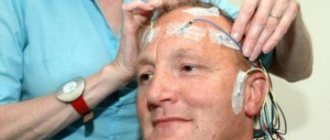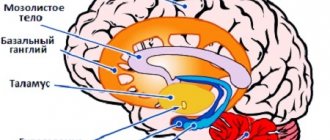What is Holotropic Breathwork?
If we break down the term “holotropic” into parts, its origin comes from the Greek words holos (translated: whole, whole) and tropein (leading). When the meanings of the translated terms are combined, the result is “breath leading to wholeness.” This is a type of psychotherapy that works on a person’s personal growth and consists of a special breathing technique that people practice for a certain time while listening to music.
Holotropic breathing triggers a whole chain of chemical reactions in the human body, which leads to changes in the functioning of the nervous system: structures responsible for unconscious processes, long-term memory, and emotions are activated. This is how breathing therapy occurs at a deep level, which frees the individual from long-standing psychological trauma. After a certain time, the patient is transformed and cured of his illness.
Breathwork using holotropic techniques was developed by an American psychologist named Stanislav Grof in the fifties. Twenty years later, when many positive studies had been done, the technique was officially recognized and approved throughout the world as an alternative method. It is used instead of the use of psychotropic drugs and is considered an effective therapy for patients.
The goal of breathwork therapy using holotropic techniques is to heal the individual so that he or she achieves wholeness while descending into one of the deepest levels of consciousness. The basis on which this technique is based is the totality of spiritual and psychological practices throughout the world acquired by humanity over many millennia of existence.
In fact, classes that include this unique technique look like this: rapid, deep, coherent breathing is performed without pauses between inhalation and exhalation; The exercises are accompanied by stimulating rhythmic music. As a result, a person is immersed in an unusual state, during which he receives a stream of unconscious experience. Next, drawing, dancing, and discussion of the ongoing process are connected to the technique.
- Housing subsidies - government programs, conditions of participation, list of documents for obtaining a certificate
- Kefir pancakes with boiling water - step-by-step recipes for preparing choux pastry with photos
- How to get rid of midges in the kitchen
Holotropic Breathwork Technique
The frequency and intensity of breaths lead to increased work of the lungs and an excess of oxygen in the blood.
You need to breathe mainly through your mouth, and your breathing should be chesty, deep and frequent. In the classic version, two people participate in the session: one is a holonaut, the one who breathes; the second is a sitter, observing the process.
Photo: istockphoto.com
First you need to lie down on a hard surface, spreading your limbs in any position. The sitter or the practitioner himself plays suitable music. Playlist options can be found on the Internet.
The holonaut must close his eyes and begin to breathe: inhale sharply, exhale smoothly. Throughout the session, attention should be completely focused on breathing. The more often and deeper the breathing, the faster the desired state will occur - on average in 20-25 minutes. After completing the session, you need to relax and distract yourself, for example, draw.
Breathe - don't breathe: how to increase the effectiveness of your training
Holotropic breathing: harm or benefit?
This breathing technique, like medications, has positive and negative effects on human health with side effects, so the opinions of psychotherapists are radically divided. Those who practice holotropic breathing claim that it is the safest way to treat psychological problems. The rest of the experts consider the technique very dangerous for the mental and physical condition of the patient. Here is the negative impact of this breathing technique on human health:
- It is compared to the way a woman breathes during childbirth, an athlete during a sprint race, or a tourist when climbing mountains. As a result, the following happens: the level of carbon dioxide in the tissues increases sharply, which causes hyperventilation of the lungs. These processes are a catalyst for such dangerous reactions as: reflex vasoconstriction, a sharp increase in blood pressure, a decrease in hemoglobin in the blood, and metabolic disorders. A person experiences temporary suffocation of the brain, and the nerve endings gradually begin to die.
- During one breathing exercise using holotropic technique, the human body loses up to three liters of carbon dioxide, which can lead to dizziness and loss of consciousness.
- If you perform such holotropic therapy on your own, without knowing all the features of the correct breathing technique, there is a risk of cerebral edema and death.
- By making even one incorrect manipulation during a breathing exercise using the holotropic technique at home, it is possible to cause irreparable harm to the central nervous system, myocardium, liver, and kidneys.
Psychotherapists who are supporters of the holotropic method of therapeutic breathing hold the opposite opinion. They claim that an absolutely healthy person who has no contraindications and has undergone professional training from Stanislav Grof’s followers in certified centers will receive only positive health effects. Here's how this technique affects the human body:
- Holotropic breathing is considered the fastest-acting technique among other psychotechniques. It leads to rapid personal changes. This happens because during a holotropic session, not each traumatic situation from the past is considered separately, but a whole generalizing block.
- Your internal system of the body itself chooses which psychological problem should be considered at the moment, thanks to which a specialist psychologist does not manipulate your consciousness (unlike other areas of psychotherapy). This is called the non-manipulative feature of holotropic technique.
- Breathing, on which this technique is based, helps to work through the deepest particles of the negative psychological experience received during the lesson.
- Thanks to classes using holotropic techniques, a person, while breathing, becomes aware of the roots of his psychological stress and is freed from them.
- The holotropic breathing technique effectively treats psychosomatic diseases (pathologies caused by a person’s negative psychological state) even in the most hopeless cases.
- The patient can easily overcome bad habits and addiction by attending classes based on rapid breathing.
- By performing the exercises of their holotropic technique, a person almost immediately gets rid of the consequences of chronic stress and fatigue, and a sense of inner harmony returns to him.
What happens to the body during practice?
Frequent breathing leads to an excess of oxygen in the blood, while the level of carbon dioxide drops, which leads to a special condition - gas alkolosis. The pressure decreases, the blood vessels narrow, then oxygen starvation occurs, which is why experiences accumulated in the subconscious come to the surface.
Thanks to this practice, a person can better understand his inner world, which is confirmed by research. There was also a “positive effect on character development” - the method is believed to promote the development of empathy.
Photo: istockphoto.com
Holotropic breathing is used as a concomitant therapy in the treatment of:
- depression;
- stress;
- addictions;
- migraine;
- premenstrual syndrome;
- asthma;
- chronic pain.
How to meditate correctly: instructions for beginners
What else is holotropic breathing used for?
The holotropic technique with unique breathing cannot be considered a panacea for all ills and illnesses of people, but its use still has a positive effect in many cases. The use of such breathing psychotherapy is so widespread that it is compared to the infinite possibilities of human consciousness. Holotropic breathing is successfully used not only for the treatment of psychological pathologies. It is effective in the fight against excess weight; works well during drug or alcohol addiction therapy. How this breathing technique works to treat certain problems:
- For weight loss. During the application of breathing used in holotropic therapy, hyperventilation occurs. A huge amount of oxygen enters the body, which promotes the effective burning of fat cells. As a result of such breathing, metabolic processes are accelerated, and this helps cleanse the body of harmful substances and toxins.
- For the treatment of alcoholism. Holotropic breathing technique has a therapeutic effect for patients suffering from alcohol addiction. When using it, a person plunges into the depths of his consciousness and faces the negative experience that led him to this problem. The patient experiences this situation in his head in a new way, gains awareness and heals from the previous trauma. The need for alcohol doping disappears, which allows you to successfully overcome addiction.
Holotropic breathing at home
This breathing technique is designed for working in groups. Therefore, even for individual practice, you need at least one experienced leader with extensive work experience; ideally, there should be two assistants - a man and a woman.
The presence of an experienced escort is necessary for several reasons.
Firstly, without an assistant it will be difficult to completely surrender and trust the process; part of the consciousness will try to control external reality, which will interfere with deep immersion in the process.
Secondly, the assistant’s task is to create a safe environment and provide the necessary assistance - cover with a blanket, place a pillow, provide water or a napkin, work through bodily blocks, provide support when intense emotional or bodily experiences arise, and help integrate the process.
We do not recommend practicing holotropic breathing on your own if you have no experience at all. Practice only under the supervision of an experienced professional. The reactions in the body can be frightening. Only a specialist will control the process and competently bring you out of the holotropic trance. Practicing on your own can be dangerous to your mental and physical health.
- Holotropic breathing can put you in a trance. It is important to have an experienced assistant nearby.
- During practice, frightening reactions may occur in the body - convulsions, vibration of limbs, pain. In this way, the negative from the unconscious enters the body and is experienced.
- For home practice, use lighter variations of holotropic breathing to avoid negative consequences for the body.
- It is important to define the purpose of your practice. What problem do you want to solve? This is not an easy meditation, but a powerful and deep impact on the human unconscious. Practicing “just because” will only bring harm.
- Use appropriate music that is designed to induce a trance state during holotropic breathwork.
There are safer breathing techniques to practice on your own. For example, ENERGY BREATHING.
How does a group session work?
To perform breathing using the holotropic technique, appropriate conditions are created in specialized centers that are aimed at relaxing a person and liberating him from negative experiences. This is achieved by fulfilling simple requirements that are necessary for classes:
- A group session using holotropic breathing techniques takes place in the form of seminars, the number of which depends on the individual problems of each visitor (from 8 to 15 sessions).
- The duration of one lesson can vary from three to eight hours.
- Participants are divided into pairs: one will play the role of a sitter (an assistant who ensures the safety of the person doing the breathing), and the other will play the role of a holonaut (the breather).
- The lesson begins with relaxation and relaxation accompanied by specially selected rhythmic music (it helps to maintain heart and respiratory rhythms).
- When the main stage of the breathing session comes to an end, all participants begin to express their emotions creatively: they draw, dance freely, and sculpt fancy figures from clay. If they want, they can discuss everything they experienced during these hours.
- The lesson is accompanied by specially selected music (read more about it below).
- Growing strawberries from seeds at home
- 8 Things That Can Help or Hurt Your Memory
- 9 habits that influence a long life
Who is the technique not suitable for?
This type of breathing is not universal and only people who do not have strict contraindications for this can safely resort to it. The technique is not at all suitable for such health problems as:
- epilepsy;
- diseases of the cardiovascular system in the stage of decompensation;
- glaucoma;
- psychotic states;
- osteoporosis;
- acute diseases of infectious nature;
- pregnancy.
Photo by Dids: Pexels
In a separate risk group are those who have undergone any surgical intervention or experienced fractures shortly before deciding to try this technique.
Is it possible to master this technique on your own?
If you have clearly decided for yourself that you are capable of engaging in this method of self-knowledge, and have a great desire, at home, independently mastering the holotropic technique with a certain method of breathing is possible. Thanks to online resources, specialized literature, and various video lessons, you have a unique opportunity to conduct classes effectively. Read on to learn about the holotropic rapid breathing technique that you can practice at home on your own.
Holotropic breathing technique at home
When doing home exercises using holotropic techniques, the disadvantage for the fullness of the session is the absence of a sitter. If a novice trainee has the opportunity to secure a pair for himself, that’s ideal. The inability to perform an activity with a “nanny” cannot be an obstacle to the use of this technique. Here are some important tips for practicing at home using Holotropic Breathwork:
- Before the session, choose a comfortable room for your lesson, having previously ventilated it.
- Stock up on suitable music (for more details on this, see a separate paragraph below).
- Determine for yourself what specific problem you want to solve with the help of holotropic therapy with rapid breathing (personal or family, for example). You must breathe to achieve a specific effect, not for the sake of the process itself.
- Take as deep, frequent breaths as possible, and do not pause your breathing. Additional special recommendations are not needed here; this is a non-verbal technique, which consists of minimal intervention during the lesson. In some ways it can be compared to meditation.
- Use different body positions that your mind dictates.
- After experiencing an emotional experience, engage in your favorite creative process, for example, drawing images you see, dancing, modeling from clay or plasticine.
- You must become aware of the emotions you have experienced.
What kind of music is needed?
Choose music that is conducive to relaxation: sounds of nature, tambourine, drum roll. It will be better if you choose different music selections for each stage. First there should be a stimulating and motivating melody, then a dramatic one mixed with a dynamic one. At the end there should be a musical breakthrough with a transition to calmer, meditative music. Check out the step-by-step description of the musical accompaniment of the entire holotropic technique session:
- For the first 8 seconds of the lesson, light music should sound, encouraging and stimulating breathing.
- Before 20 seconds into class, record an even more breathing-stimulating melody.
- For the next 20 seconds of the holotropic session, an ethnic recording should be played using drumming.
- Afterwards, the intensity of the breathing exercise with holotropic technique is replaced by a trance state, so a dramatic melody should sound for the next 35 seconds.
- Then the drama subsides, and the style of musical accompaniment is replaced by heartfelt, warm music. This lasts for the next 15 seconds of the holotropic breathing session.
- Afterwards, the melody should smoothly turn into a calm one, but maintain intensity. This rhythm should be maintained until the very end of the holotropic breathing session.
Physiology of Holotropic Breathwork
From a physiological point of view, the essence of holotropic breathing is hyperventilation of the lungs due to rapid breathing, as a result of which CO2 is washed out of the blood, brain vessels narrow for a short time, inhibition of the cerebral cortex begins and the subcortex is activated. The combination of this process with stimulating music and bodywork methods allows you to get into an altered state of consciousness. In this state of consciousness, experiences repressed into the subconscious occur (pain, resentment, fear, anger), which allows one to work through and remove physical and mental blocks and clamps that prevent a person from self-realization and achieving goals.
Medical contraindications for use
Before performing breathing exercises, you need to find out if you have any medical contraindications to the use of this technique. There are many contraindications to practicing this type of breathing. Check out the detailed list of diseases/indications, the presence of which prohibits holotropic therapy:
- In the process of conducting a lesson on rapid breathing, a person may experience emotional outbursts, stress, and physically feel his experiences (through an increase in body temperature, for example). For those who suffer from angina, hypertension, heart failure, asthma - all this is very dangerous and can be fatal.
- Pregnancy. This can lead to the death of the fetus in the womb.
- Classes using holotropic therapy are not indicated if a person suffers from epilepsy. The use of this technique increases the risk of a seizure from the received emotions.
- Do not practice holotropic techniques if you have recently undergone surgery or any trauma. Vigorous breathing exercises can cause the stitches to tear.
- Classes based on the holotropic technique are contraindicated during the acute stage of infectious diseases.
- Children under 14 years of age are not allowed to attend such sessions.
Holotropic Breathwork Therapy
The holotropic therapy session itself lasts from one and a half to three hours, after which the couple switches roles. After a person comes out of the trance state and the session ends, he needs to display all his thoughts and experiences during the session on the mandala. Most often, such classes are conducted in a group of people, so after the end of one session, those people who were immersed in a trance demonstrate and discuss their mandalas.
Holotropic therapy has a basic philosophical meaning - basically, a person who is not associated with esoteric practices lives with constant identification of himself with his physical body, or his Ego. This type of self-image is very unsafe as it creates an unhealthy mindset in a person regarding their lifestyle. It is also believed that this representation of one’s life can cause psycho-emotional disorders.
Video lesson: How to learn to breathe correctly
If you want to use holotropic techniques effectively, it is important to learn how to breathe correctly. Otherwise, it will not only have no effect during therapy, but may even lead to huge health problems and irreversible processes in the body with a fatal outcome. Check out a comprehensive video tutorial below that teaches proper breathing techniques during a holotropic session. This way you will learn many useful recommendations and instructions that will help you get the healing effect from using this method.
What is holotropic breathing: history of technology and known analogues
The official date of birth of the “holotropic breathing” respiratory system is considered to be 1975, when the American psychologist of Czech origin Stanislav Grof, together with his wife Christina Grof, received the corresponding patent.
Photo by BARBARA RIBEIRO: Pexels
This follows nearly 20 years of research into the psychotherapeutic and psychedelic effects associated with LSD, and the need to recreate these effects in a safer way.
In essence, holotropic breathing is a therapeutic practice that is based on a certain respiratory system, in particular, hyperventilation of the lungs. This helps to quickly carry out meditation exercises, get rid of depression, relax, and turn off areas of consciousness that hold anxious and panic reactions and memories.
Similar breathing practices were known long before Grof’s observations. So, something similar is used in classical yoga and is called pranayama. The technique allows you to control and change the ratio of carbon dioxide and oxygen concentrations in the body, which directly affects emotional stability, as well as the speed and type of reaction to external stimuli.
Holotropic Breathwork Instructions
You should carefully prepare for holotropic breathing, as indicated by the instructions:
- Choose comfortable clothes.
- Before the session, visit the toilet.
- Do not eat heavy food.
- The choice of sitter should be comfortable.
- The music should be pleasant and not distracting.
The sitter and holonaut should pay attention only to practice. The sitter should not be distracted by anything and not do other things. And the holonaut must track his breathing, and also immerse himself in the experiences that arise.
How to do HOLOTROPIC BREATHING BY YOURSELF?
| Date: October 2, 2012 | Category: Holotropic Breathwork | Comments: |
Hello! Quite often I see and hear questions about whether it is possible or not to undergo holotropic breathing . Today I wanted to express my position on this matter.
What is holotropic breathing, holotropic process? This is great energy that allows a person to enter deep altered states of consciousness.
Holotropic breathing is a group technique, and the group here is not only a “cheaper” option for each of the participants. In a group, a person ceases to be a separate being. This includes socio-psychological (group) effects. I would especially like to note the influence of group energy.
Here's what I wrote about holotropic breathwork and strategies for entering altered states of consciousness:
“If your breathing, as it seems to you, is not “given”, try to listen to what is happening in the room. With a very high degree of probability I can say that if you have a group of more than 12 people, and not everyone in it is new, for some the process will go violently - with loud breathing, movement, screams, or just sounds. Try to adapt to his breathing, or “get hooked on his (her) energy”, imagine that it is you who are breathing like that. Try to become one with him, but don’t lose yourself.”
This advice is correct, but holotropic breathing becomes even more interesting when the group is large and there are several such “foci” with violent processes. So much energy spills out in these foci that everyone around them is infected - both sitters and holonauts.
I was very skeptical about the concept of “group energy” until I participated in the first “big” process. Holotropic breathing in a large group is a process in which you can literally touch the energy with your hands, it is so dense.
I'll make a small digression. Holotropic Breathwork has certain standards (including how group members are positioned), but I prefer a different format of work. More “Russian” format. I like it when the conditions are like this:
- Holonauts lie closer to each other than 2 meters apart.
- The room is small with a low ceiling and soft carpet floor.
- twilight or darkness. The curtains are drawn.
Holotropic breathing begins , and the whole room seems to come to life. It feels like the walls and floor are starting to vibrate. Everything is transformed. And a crazy dance breaks out. Dance of life.
In such an atmosphere, it is almost impossible to remain in your personal process. Boundaries blur and deeper altered states of consciousness arise.
The most interesting processes for me took place in such conditions, well, or close to such.
And now about independent passage.
INDEPENDENT HOLOTROPIC BREATHING IS IMPOSSIBLE!
I will clarify. Historically, holotropic breathwork evolved from rebirthing. Rebirthing is a pair technique. Holotropic breathing was also originally a paired technique, but over time it transformed into a group technique. And this was done for a reason. The group allows you to enter into a much deeper process; more powerful altered states of consciousness arise in the group.
You can breathe at home with music playing on your computer speakers or headphones, but this is a different format. Don't expect any revelations. There won't be any. Most likely, it will just be working with body clamps. Maybe a couple of not very bright images. Yes! And you will not be able to catch your breath during the 2-2.5 hour process that holotropic breathing is designed for. I think you will calm down after 30-40 minutes, because this is an energy-consuming process, and there is nowhere to get energy from.
Holotropic breathing is based on turning off increased control, and you won’t be able to do this alone in the room, because you will be afraid of hurting yourself on the back of the sofa, chair or bed. You will think, what if someone hears? Or what if relatives/neighbors return early?
Independent breathing can be practiced not as the main, but as a supporting technique, as an element of mental hygiene. I would advise you to adhere to these rules:
- First, it is advisable to go through several processes with an experienced person (even better with a certified trainer) so as not to be disappointed and to get a taste of what holotropic breathwork has.
- You should not breathe the process on your own if you have contraindications to undergoing the process (see Memo of contraindications for holotropic breathing on the website).
- Do not expect very strong experiences when focusing specifically on working with bodily blocks. Yes, and be prepared that your arms and legs will be severely cramped.
- Don't force yourself trying to breathe as long as possible. If you can’t get into deep altered states of consciousness, then not this time. Relax. Everything is fine. End the process as it was.
How to do independent holotropic breathing ?
We have already agreed that an independent process is not exactly holotropic breathing, but still sometimes there is no opportunity to go to a group, but there is a desire to go through it yourself. I can admit that for the first time I also went through holotropic breathing alone with myself, not understanding what types of breathing exist, what connected breathing is, not having special music, and not really knowing anything about the format of breathing. This was back in the “pre-Google” times.
So, how should you organize independent holotropic breathing ?
- We will assume that you have already become familiar with the Cartography of Consciousness, or what can be experienced by practicing holotropic breathwork (see Is the game worth the candle?).
- Prepare the music. The playlist should be approximately 1 hour long. Doesn't make sense anymore. For the first 5 minutes the music should be calm and relaxing; from the sixth minute it begins to intensify. For the last 5-10 minutes, the music gradually decreases in intensity and becomes soothing. Be sure to turn off playlist repeat so the music doesn't repeat itself!
- Find a secluded place, or agree with your loved ones that they will not visit you for 1-1.5 hours.
- Close the doors, curtain the curtains. You need to close yourself both so that there are no extraneous noises, the sun does not interfere, and in order to feel safer, as if inside a symbolic “womb”.
- Find a comfortable place indoors. You should be comfortable lying down. It’s good if it’s a large bed with a not very soft mattress (so that you don’t fall in and it doesn’t interfere with your movement). It's even better to sit on the floor. There is usually more space there, and it is much less familiar than lying on a bed, so this is an additional point that makes it easier to get into altered states of consciousness.
- Holotropic breathing should be built in accordance with the music. Don't forget, breathing should be coherent! The first 5 minutes (see point 1) breathing is slow, deep (oceanic), then the intense and prolonged part begins - fast deep breathing. At the end there is a smooth transition to a slow deep one again. It is also quite possible that you will spontaneously switch to trance-like “slow shallow” breathing. If the process becomes completely unpleasant, stop breathing, or switch to “fast shallow” breathing (“emergency” breathing).
- After you finish breathing, you don’t need to immediately jump up and go do housework or study for exams. Lie down until you feel that everything has calmed down, your emotions have subsided, and you feel pleasantly relaxed and satisfied. My breathing has evened out.
- Quickly, quickly write down how it was (just kidding). After breathing, it will be good if you also do some creative work. For example, draw a mandala. I’ll tell you more about drawing mandalas!
And remember that holotropic breathing is a powerful technique, but becoming a god at every process is not an end in itself! You must breathe in order to understand yourself. Holotropic breathing is a kind of cross-section of your personality and your essence. What is relevant to you at the moment. Trust your experiences.
Successful practice. See you soon!
Provorov Andrey
Post tagged: Holotropic Breathwork
Navigation
Previous article: ← How I swam in Alyosha Popovich’s spring
Next article: I’m leaving Baku. Altered states of consciousness and the gym →
What is the end result of holotropic breathing?
If holotropic breathing is carried out correctly, then a person achieves relaxation and liberation from tormenting emotions and depression. You can see the whole problem and also feel your own potential.
However, some individuals use holotropic breathwork for their own purposes, forcing people to submit to their will when they are in an altered consciousness. Here you just need to contact a specialist, and not the so-called gurus who called themselves that. Then the person will not cause any harm to his body and psyche.
Validity of criticism
You are probably interested in the latest trends in the topic of psychotraining and know about the growing offer of assistance in the treatment of stress using various breathing exercises and practices. The holotropic breathing technique is one of the most popular in its niche. However, the attitude of specialists towards it is controversial and is divided into two opposing camps: if some see in this practice the possibility of internal liberation and a good springboard for the development of empathy, then others look out for negative side effects and the dubiousness of the result.
In terms of critical condemnation of this therapeutic approach, one can refer to the opinion about the probable hypoxia of nerve cells caused by both the duration of the procedure and the inability of the mentor to competently accompany this process. Therefore, before starting the practice of holotropic breathing, it is important to select an assistant who has some positive experience in this area.
The right approach to the matter will allow you to achieve the desired result, helping to cleanse yourself of internal emotional debris and making it easier for specialists to return you to a normal life without complexes and negativity.










